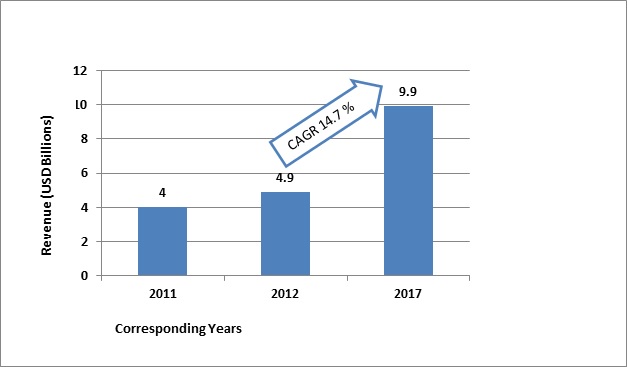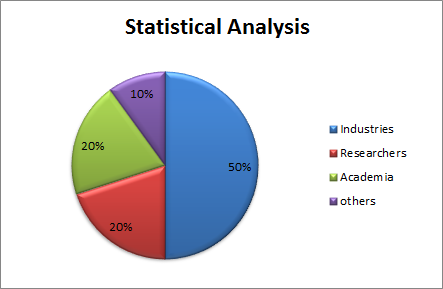
Toxicology Meeting 2017

Theme: Communing Toxicology Investigations for Human Health
Meetings International proudly announces the Global Experts Meeting on Toxicology Conference scheduled during November 13-14, 2017 at Singapore, With a theme of “Communing Toxicology Investigations for Human Health".
Meetings International provides a Global Platform for Toxicology Professionals, Biotech, Medical and Healthcare Professionals to Exchange Ideas, Knowledge and Networking at its 100+ International Conferences.
The global Toxicology testing market is expected to USD 27.36 Billion by 2021 from USD 14.15 Billion in 2016, at a CAGR of 14.1% between 2016 and 2021. Toxicity testing of new compounds is essential in drug development, as identifying the potential toxicity at an early stage in drug discovery can save both time and developmental costs, and also reduce the likelihood of late-stage failure. Market is valued at USD 12.54 Billion in 2016. This market is expected to grow at a CAGR of 11.7% during the forecast period to reach USD 21.87 Billion by 2021.
Toxicology meeting 2017 will impart an attractive moment to meet people in the research field and therefore it takes a delight in opening a gate to meet the ability in the field, young researchers and potential speakers. The conference also includes essential topics on Genetic Toxicology ,Clinical Toxicology, Drug Toxicology, Immunotoxicology, Forensic Toxicology, Food Toxicology, Occupational Toxicology & Human Risk Assessment, Regulatory Toxicology, Toxicological Studies, Neurotoxicology & Reproductive Toxicology, Natural & Cosmetic Toxicology, Target Organ Toxicology, Mechanistic Toxicology, Environmental Toxicology, Veterinary toxicology, Computational toxicology, Nanotoxicology.
Meetings International proudly announces the Global Experts Meeting on Toxicology Conference scheduled during November 13-14, 2017 at Singapore, With a theme of “Communing Toxicology Investigations for Human Health".
Meetings International provides a Global Platform for Toxicology Professionals, Biotech, Medical and Healthcare Professionals to Exchange Ideas, Knowledge and Networking at its 100+ International Conferences.
The global Toxicology testing market is expected to USD 27.36 Billion by 2021 from USD 14.15 Billion in 2016, at a CAGR of 14.1% between 2016 and 2021. Toxicity testing of new compounds is essential in drug development, as identifying the potential toxicity at an early stage in drug discovery can save both time and developmental costs, and also reduce the likelihood of late-stage failure. Market is valued at USD 12.54 Billion in 2016. This market is expected to grow at a CAGR of 11.7% during the forecast period to reach USD 21.87 Billion by 2021.
Toxicology 2017 conference will impact an attractive moment to meet people in the research field and therefore it takes a delight in opening a gate to meet the ability in the field, young researchers and potential speakers. The conference also includes essential topics on Genetic Toxicology ,Clinical Toxicology, Drug Toxicology, Immunotoxicology, Forensic Toxicology, Food Toxicology, Occupational Toxicology & Human Risk Assessment, Regulatory Toxicology, Toxicological Studies, Neurotoxicology & Reproductive Toxicology, Natural & Cosmetic Toxicology, Target Organ Toxicology, Mechanistic Toxicology, Environmental Toxicology, Veterinary toxicology, Computational toxicology, Nanotoxicology.
Attend to gain an unmatched experience in the Toxicology field.
Meetings International Toxicology Meeting will offer you an unmatched attendee experience. In addition to the many scientific sessions and take-home case study examples, you will leave this event with many other novel development strategies from some of our workshops and symposiums. Engage in dynamic conversation with your industry peers at our multiple networking sessions, and takeaway novel drug development and commercialization strategies, which could speed up time to market and save your organization millions. We hope you will join us in Singapore this November to enhance your research capabilities, and increase time to market on therapeutics.
Sincerely,
Operating Committee
CEO and Founder
Meetings International PTE LTD.
Track 1: Genetic toxicology
Genetic toxicology is the study of the effects of chemical and physical agents on genetic material. It includes the study of DNA damage in living cells that causes cancer, but it also examines changes in DNA that can be inherited from one generation to the next.
Genetic toxicology explains mechanisms of heredity by providing tools to study DNA and RNA structure. It also includes Genotoxicity testing to determine if a substrate will influence genetic material or may cause cancer. Genotoxicity testing can be performed in bacterial, yeast, and mammalian cells. With the knowledge from the tests, one can control early development of vulnerable organisms to genotoxic substances.
Related associations: The Asian Society of Toxicology ; South Asian Clinical Toxicology Research Collaboration ; EUROTOX ; Estonian Society of Toxicology ; SOT ; Malaysian Society of Toxicology
Track 2: Human and Health Toxicology
Human and health toxicology deals with the study of the adverse effects caused to the body by drug substances. It includes a wide range of disciplines such as Organ systems toxicity, lung toxicology et al,.
Related associations: International Union of Toxicology ; Swedish Society of Toxicology ; British Toxicology Society ; ABT ; International Union of Toxicology
Track 3: Applied Toxicology
Applied Toxicology deals with the fundamentals in toxicology and risk assessment, including the most important databases. It is a branch of Toxicology in which technical principles and procedures are utilized, usually together with other methodical or technical disciplines to regulate the physiological effect or safety of an administered product.
Related associations: The Australasian Society of Clinical and Experimental Pharmacologists and Toxicologists (ASCEPT) ; The Japanese Society of Toxicology ; Malaysian Society of Toxicology ; British Toxicology Society ; Chinese Society of Toxicology
Track 4: Occupational toxicology and Human risk assessment
The science of toxicology has many applications. One of these, relates to exposure of people to noxious or hazardous agents during the course of their work. Work-related exposures are studied by use of inhalation and skin exposure monitoring as well as biomarkers of exposure, susceptibility and effect, usually as part of epidemiological exposures.
Modelling of dose-response relationships will be used to derive a safe level for workers using data from small scale experimental (animal or volunteer) studies. A cursory glance at the Group 1 carcinogen list of the International Agency for Research on Cancer (IARC) should be evidence enough from this perspective. The epidemic of asbestos-related cancer that continues in some countries.
Related associations: International Union of Toxicology; Swedish Society of Toxicology ; British Toxicology Society ; American Board of Toxicology ; Estonian Society of Toxicology
Track 5: Experimental Toxicology
Experimental toxicology plays a key role in inventing the new drugs. In vivo and in-vitro studies help in bringing up the new drugs to the world. Preclinical studies of a drug will help to know the further steps to eradicate the toxic effects. Experimental toxicology helps in development, manufacture, quality, effectiveness and safety testing of drugs, foodstuffs and other substances or products.
Related associations: Asia Pacific Association of Medical Toxicology (APAMT) ; Chinese Society of Toxicology ; The Japanese Society of Toxicology ; The Australasian Society of Clinical and Experimental Pharmacologists and Toxicologists (ASCEPT) ; Malaysian Society of Toxicology
Track 6: Industrial Toxicology
The dangerous effects on human beings by chemicals used in the workplace, the products produced by companies, and the wastes created in manufacturing are known as industrial toxicology. Particular industries, such as the pharmaceutical and pesticide industries commonly should conduct many studies and experiments to demonstrate the safety of the chemicals that they develop .The product development toxicology biochemical and molecular toxicology, chemical toxicology, heavy metals and acute zinc and iron toxicity are few industrial effects.
Related associations: International Union of Toxicology ; Swedish Society of Toxicology ; British Toxicology Society ; American Board of Toxicology ; Estonian Society of Toxicology ; EUROTOX ; SOT
Track 7: Clinical Toxicology
Clinical toxicology involves the detection and treatment of poisonings caused by a wide variety of substances, including household and industrial products, animal poisons and venoms, environmental agents, pharmaceuticals, and illegal drugs.
Each year poisonings account for approximately 43,000 deaths and at least 2.3 million emergency department visits. Males have a nearly twofold higher incidence of death than do females and 15% of adult poisoning deaths are attributed to suicide. Approximately 0.2% of poisoning deaths involve children younger than 5 years. Emergency department visits for drug misuse and abuse, typically 51% involve illicit drugs, 59% involve pharmaceuticals, and 30% involve alcohol in combination with other drugs and underage drinking.
Related associations: SOT ; ABT ; Swedish Society of Toxicology ; British Toxicology Society ; American Board of Toxicology
Track 8: Drug Toxicology
Some drugs can be toxic to certain patients because of genetic predisposition, non-selective action, or inappropriate use or administration of the drug. The United States Food and Drug Administration (FDA) spends a significant portion of its $1 trillion budget to ensure that new drugs are not overtly or unnecessarily dangerous. Moreover, pharmaceutical and biotechnology companies spend years and millions of dollars in clinical trials to understand the safety and inherent toxicity of their drugs.
Related associations: Asia Pacific Association of Medical Toxicology (APAMT) ; Chinese Society of Toxicology ; The Japanese Society of Toxicology ; Estonian Society of Toxicology ; EUROTOX ; SOT
Track 9: Food Toxicology
Food Toxicology focuses on the analysis and toxic effects of bioactive substances as they occur in foods. Food toxicology is a distinct field that evaluates the effects of components of the complex chemical matrix of the diet on the activities of toxic agents that may be natural endogenous products or may be introduced from contaminating organisms, or from food production, processing, and preparation.
Related associations: Chinese Society of Toxicology ; The Japanese Society of Toxicology ; The Australasian Society of Clinical and Experimental Pharmacologists and Toxicologists (ASCEPT) ; Malaysian Society of Toxicology ; EUROTOX
Track 10: Forensic toxicology
Forensic toxicology deals with the investigation of toxic substances, environmental chemicals or poisonous products. Forensic toxicology is a bit of a mix of many other scientific disciplines such as chemistry, pathology and biochemistry. A forensic toxicologist must consider the context of an investigation, in particular any physical symptoms recorded, and any evidence collected at a crime scene that may narrow the search, such as pill bottles, powders, trace residue, and any available chemicals.
The chemical makeup of each substance is studied and they are also identified from different sources such as urine or hair. Forensic toxicology deals with the way that substances are absorbed, distributed or eliminated in the body – the metabolism of substances. The choice of method for testing is highly dependent on what kind of substance one expects to find and the material on which the testing is performed. Gas-liquid chromatography is of particular use in examining volatile organic compounds. Detection of metals by Reinsch test, emission spectroscopy or X-ray diffraction. Drugs, both prescribed and illicit, pesticides, natural products, pollutants and industrial compounds are some of the most common non-volatile compounds encountered. Screening methods include thin-layer chromatography, gas-liquid chromatography and immunoassay.
Related associations: The Asian Society of Toxicology ; South Asian Clinical Toxicology Research Collaboration ; Asia Pacific Association of Medical Toxicology (APAMT) ; British Toxicology Society ; American Board of Toxicology
Track 11: Immunotoxicology
The discipline concerned with the study of the events that can lead to undesired effects as a result of interaction of xenobiotics with the immune system. These undesired events may result as a consequence of a direct and/or indirect effect of the xenobiotic on the immune system, or an immunologically based host response to the compound and/or its metabolites, or host antigens modified by the compound or its metabolites. In the non-adult (embryo, foetus, neonate, juvenile, adolescent) this study is referred to as Developmental Immunotoxicology.
Related associations: Swedish Society of Toxicology ; British Toxicology Society ; American Board of Toxicology ; Estonian Society of Toxicology ; EUROTOX ; SOT
Track 12: Regulatory Toxicology
Regulatory toxicology encompasses the collection, processing, and evaluation of epidemiological and experimental toxicology data to permit scientifically based decisions directed toward the protection of humans from the harmful effects of chemical substances. Furthermore, this area of toxicology supports the development of standard protocols and new testing methods to continuously improve the scientific basis for decision-making processes.
Related associations: American Board of Toxicology ; Estonian Society of Toxicology ; EUROTOX ; SOT ; Malaysian Society of Toxicology
Track 13: Neurotoxicology and Reproductive toxicology
Neurotoxicity and reproductive toxicity are important areas for risk assessment, since the nervous and reproductive systems are highly sensitive to xenobiotic effects. Many pesticides are deliberately designed to disrupt reproduction and neurological function in target organisms, such as insects, through interference with hormonal biochemistry and neurotransmission.
The manifestations of neurotoxicity include effects on learning (including memory, cognition and intellectual performance), somatosensory processes (including sensation and proprioreception), motor function (including balance, gait and fine movement control), affect (including personality status and emotionality) and autonomic function (nervous control of endocrine function and internal organ systems)
Reproductive hazards may affect the development of the reproductive system in males or females, reproductive behaviours, hormonal function, the hypothalamus and pituitary, gonads and germ cells, fertility, pregnancy and the duration of reproductive function.
Related associations: The Asian Society of Toxicology ; South Asian Clinical Toxicology Research Collaboration ; Asia Pacific Association of Medical Toxicology (APAMT) ; Chinese Society of Toxicology ; The Japanese Society of Toxicology
Track 14: Pharmacology and Toxicology
Pharmacology is the branch of biology which deals with the study of drug action. A drug can be broadly defined as any man-made, natural, or endogenous molecule which exerts a biochemical or physiological effect on the cell, tissue, organ, or organism. More specifically, it is the study of the interactions that occur between a living organism and chemicals/pharmaceuticals that affect normal or abnormal biochemical function.
The field encompasses drug composition and properties, synthesis and drug design, molecular and cellular mechanisms, organ/systems mechanisms, signal transduction/cellular communication, molecular diagnostics, interactions, toxicology, chemical biology, therapy, and medical applications and anti-pathogenic capabilities.
Related associations: Chinese Pharmacological Society; The Australian society of clinical and experimental pharmacologists and toxicologists (ASCEPT); Association for Applied Human Pharmacology (AGAH); Association for Ocular Pharmacology and Therapeutics; Croatian Pharmacological Society (HDF); Colombian Association of Pharmacology (ACF)
Track 15: Target Organ Toxicology
Target organ effects indicate which bodily organs are most likely to be affected by exposure to a substance. The accumulation of antimicrobial drugs and their metabolic by-products in organs can be toxic, leading to organ damage. Toxicity can mention to the effect on an entire organism and the result on a substructure of the creature such as organ which may effect on any organ of the human being organ or tissue in the human body can be affected by antimicrobial toxicity.
Related associations: International Union of Toxicology ; Swedish Society of Toxicology ; British Toxicology Society ; American Board of Toxicology ; Estonian Society of Toxicology
Track 16: Environmental Toxicology
There are many sources of environmental toxicity that can lead to the presence of toxicants in our food, water and air. Every day, all of us ingest tiny amounts of these chemicals. The EPA estimates there are more than 20,000 chemicals that our bodies cannot metabolize. Chemicals not metabolized are stored in the fat cells throughout our bodies where they continue to accumulate.
These sources include organic and inorganic pollutants, pesticides and biological agents. There can be so called point sources of pollution, for instance the drains from a specific factory but also non-point sources (diffuse sources) like the rubber from car tires that contain numerous chemicals and heavy metals that are spread in the environment.
Related associations: ABT ; British Toxicology Society ; American Board of Toxicology ; Estonian Society of Toxicology ; EUROTOX ;SOT
Track 17: Veterinary Toxicology
The subject of veterinary toxicology is complicated greatly by the wide variations in responses of domestic, aquatic, wild and zoo species to toxicants. By the turn of the 21st century, began to face new problems such as, during the incident of 2001, a large number of pets died from the collapse of the World Trade Centre in New York City, while the surviving ones still suffer from a variety of illnesses (Ground Zero Illnesses) caused by the dust, debris and toxic chemicals.
In 2005, two major hurricanes (Katrina and Rita) devastated the lives of so many animals in the Gulf Coast states of Louisiana and Mississippi. Thousands of animals died, while a large number of others suffered from intoxication with high levels of metals, pesticides, algal toxins and many other unidentified toxic substances.
Related associations: Asia Pacific Association of Medical Toxicology (APAMT) ; Chinese Society of Toxicology ; The Japanese Society of Toxicology ; SOT ; ABT
Track 18: Computational Toxicology
The Computational Toxicology Research Program is a technology-based, hypothesis-driven effort to increase the soundness of risk assessment decisions within the Agency. It is designed to increase the capacity to prioritize, screen, and evaluate chemicals by enhancing the ability of the Agency to predict chemicals’ toxicities. Success will be measured by the ability to improve risk assessments by understanding the potential of chemicals to affect molecular and biochemical pathways of concern, and their toxicity pathways.
Related associations: International Union of Toxicology ; Swedish Society of Toxicology ; British Toxicology Society ; American Board of Toxicology ; Estonian Society of Toxicology
Track 19: Nanotoxicology
In spite of its beneficial outcomes in various fields, nanoparticles have created a worldwide concern due to its toxicities on the health and ecosystem. Hence, it is the responsibility of the manufacturer to establish the toxicity profile for the nanoparticles to reassure the regulators, workers, and consumers that the nanoparticles can be used safely. Similarly, academic researchers, who are involved in the nanoparticle research, should generate the toxicity profile for the nanoparticles prior to establish the beneficial outcomes in animal models.
Related associations: Malaysian Society of Toxicology ; International Union of Toxicology ; Swedish Society of Toxicology ; British Toxicology Society ; ABT
Track 20: Natural and cosmetic toxicology
Many plants & animals produce toxic substances for both defence & offensive purposes. Natural toxins may feature in poisoning via containing in food, by accidental ingestions of poisonous plants or animals by stinging & biting.
The National Institute of Occupational Safety and Health (NIOSH) analyzed 2,983 chemicals used in personal care products and found that: 884 were toxic 778 caused acute toxicity 313 caused biological mutations 376 caused skin & eye irritations 148 caused tumours 218 caused reproductive complications.
Toxic effects of Synthetic Chemicals Accelerated aging Acne, Allergies, Anxiety, Arthritis, Asthma & breathing disorders, Autoimmune Diseases, Birth defects, Bone Marrow Damage Brain Fog, Brain Haemorrhage, Breast Cancer, Cancer.
Related associations: Asia Pacific Association of Medical Toxicology (APAMT) ; Chinese Society of Toxicology ; The Japanese Society of Toxicology ; The Australasian Society of Clinical and Experimental Pharmacologists and Toxicologists (ASCEPT) ; Estonian Society of Toxicology ; EUROTOX ; SOT
Track 21: Mechanistic toxicology
Mechanistic toxicology describes the processes of how chemicals exert their toxic effects in biological systems. Mechanistic toxicology therefore not only delineates a hazard for a particular chemical, and defines the potency of one compound in comparison with its congeners, but also aims at identifying the underlying molecular events that lead from initial exposure to the chemical to the ultimate manifestation of toxic injury in an organism.
Related associations: Asia Pacific Association of Medical Toxicology (APAMT) ; Chinese Society of Toxicology ; The Japanese Society of Toxicology ; The Australasian Society of Clinical and Experimental Pharmacologists and Toxicologists (ASCEPT) ; Malaysian Society of Toxicology ; International Union of Toxicology
Market Analysis
The global Toxicology testing market is expected to USD 27.36 Billion by 2021 from USD 14.15 Billion in 2016, at a CAGR of 14.1% between 2016 and 2021. Toxicity testing of new compounds is essential in drug development, as identifying the potential toxicity at an early stage in drug discovery can save both time and developmental costs, and also reduce the likelihood of late-stage failure. Market is valued at USD 12.54 Billion in 2016. This market is expected to grow at a CAGR of 11.7% during the forecast period to reach USD 21.87 Billion by 2021.
Top societies and associations associated with research in the field of Toxicology:
· Society of Toxicology, USA (SOT)
· Society of Toxicology of Canada
· Latin American Association of Toxicology (ALATOX)
· Japanese Society of Toxicology
· Italian Society of Toxicology
· German Society of Toxicology
· EUROTOX
· British Toxicology Society
· French Society of Toxicology
· International Society of Regulatory Toxicology and Pharmacology
Target Audience:
· Professors
· PhD Scholars
· Students carrying out laboratory and field studies
· Pharmaceutical Industrial Giants
· Toxicology Societies and the people Associated
· Noble laureates in Health Care and Medicine
· Pharmacists
· Genetic Professionals
· Forensic Professionals
· Toxicology Professionals
· Pathology Professionals
· Clinical Laboratories and Technicians
· Bio instruments Professionals
· Software development companies
· Research Institutes and members
· Supply Chain companies
· Manufacturing Companies
· Training Institutes
· Business Entrepreneurs
· Bio-informatics Professionals
Glance at the Market:
The global in vitro toxicology testing market is expected to USD 27.36 Billion by 2021 from USD 14.15 Billion in 2016, at a CAGR of 14.1% between 2016 and 2021. Toxicity testing of new compounds is essential in drug development, as identifying the potential toxicity at an early stage in drug discovery can save both time and developmental costs, and also reduce the likelihood of late-stage failure.

Figure 1: Global In Vitro Toxicity Market Estimates and Forecast, 2011-2017
Opposition to animal testing, new & promising technologies, increasing R&D to detect toxicity at early stages and insufficient databases to facilitate the use of in vitro test methods are driving factors of the in vitro toxicology testing market. On the other hand lack of in vitro models to detect autoimmunity and immunostimulation and predictive ability of in vitro testing over in vivo testing are the major factor restraining the growth of this market.
The global in vitro toxicology testing market is expected to USD 27.36 Billion by 2021 from USD 14.15 Billion in 2016, at a CAGR of 14.1% between 2016 and 2021.
The large share in the global Toxicology attributed to presence of developed research infrastructure in the U.S. & Canada, increasing acceptance of personalized medicine, and growing adoption of technologically advanced products in this region. The Asia-Pacific region is expected to register the highest CAGR, due to the growth in research activities and increasing investments by leading players and respective government agencies in the region.
|
|
Figure 2 : Statistical analysis
Why Singapore?
The national capital and most populous city of Singapore is amongst the fastest growing metropolitan city in South-East Asia, in terms of economy and population. Rated as an alpha world city, Singapore is the financial, cultural and economic center of Malaysia due to its position as the capital. The Singapore Government has identified Toxicology as one of the core technologies to accelerate the transformation of the entire country. Singapore into a knowledge based economy and an industrialized nation by year 2020. Singapore provides opportunities for global participation and robust development in the field of Toxicology, global Toxicology and other related sectors as it strives to be the preferred destination Toxicology investments.
The global Toxicology market was valued at nearly $5.1 billion in 2014 and the market was valued at over USD 11.8 billion in 2015. The global market of Toxicology compound annual growth rate (CAGR) of 18.0% to reach a forecast value of $11.6 billion by 2019.
- Genetic Toxicology
- Human and Health Toxicology
- Applied Toxicology
- Occupational Toxicology & Human Risk Assessment
- Experimental toxicology
- Industrial Toxicology
- Clinical Toxicology
- Drug Toxicology
- Food Toxicology
- Forensic Toxicology
- Immunotoxicology
- Regulatory Toxicology
- Neurotoxicology & Reproductive Toxicology
- Pharmacology and Toxicology
- Target Organ Toxicology
- Environmental Toxicology
- Veterinary toxicology
- Computational toxicology
- Nanotoxicology
- Natural & Cosmetic Toxicology
- Mechanistic Toxicology
- Journal of Drug Metabolism and Toxicology
- Journal of Forensic Toxicology and Pharmacology
- Journal of Clinical Toxicology
5 Organizing Committee Members
14 Renowned Speakers
Gautam Sethi
Singapore
Ime Udotong Rufus
Nigeria
Justina Udotong
Nigeria
Woo-Haing Shim
South Korea
Donatus Dube
Zimbabwe
Riffi Mohammed
Algeria
Xiulei Fan
China
Peipei Wang
Singapore
Bin Zhou
USA
Wong Siong Sung
Singapore
Siew-Pang Chan
Singapore
Iqbal Hussian
Pakistan
Soren Paludan Sheikh
Denmark

































































































































